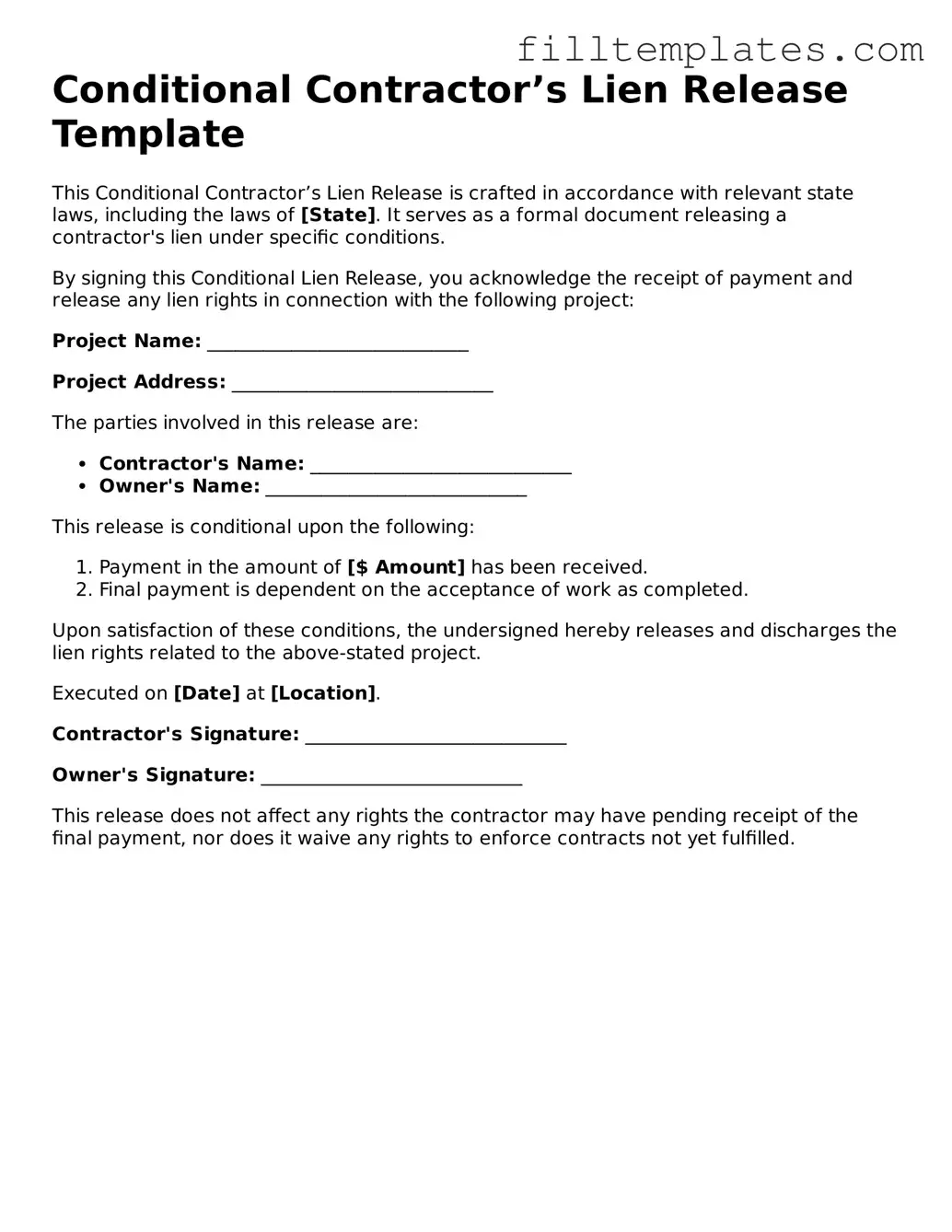Conditional Contractor’s Lien Release Template
This Conditional Contractor’s Lien Release is crafted in accordance with relevant state laws, including the laws of [State]. It serves as a formal document releasing a contractor's lien under specific conditions.
By signing this Conditional Lien Release, you acknowledge the receipt of payment and release any lien rights in connection with the following project:
Project Name: ____________________________
Project Address: ____________________________
The parties involved in this release are:
- Contractor's Name: ____________________________
- Owner's Name: ____________________________
This release is conditional upon the following:
- Payment in the amount of [$ Amount] has been received.
- Final payment is dependent on the acceptance of work as completed.
Upon satisfaction of these conditions, the undersigned hereby releases and discharges the lien rights related to the above-stated project.
Executed on [Date] at [Location].
Contractor's Signature: ____________________________
Owner's Signature: ____________________________
This release does not affect any rights the contractor may have pending receipt of the final payment, nor does it waive any rights to enforce contracts not yet fulfilled.
